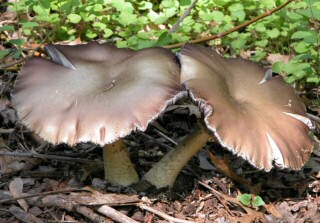Park Street, P.O. Box 41, Demarest, NJ
www.demarestnaturecenter.org
Borough of Demarest, leased by Demarest Nature Association
Exit Stateline Lookout, bearing Right. Merge onto Palisades Interstate Parkway North. You will have to make a U-turn to travel south, so look for an opening to allow you to cross immediately into the Left lane. After 2/10 of a mile follow signs for U-Turn – Exit 3/Route 9W. Merge onto Palisades Interstate Parkway South. After 2 miles take Exit 2/Alpine/Closter/ Route 9W on the Right. Bear Left on ramp. Turn Left at stop sign onto 9W South. Turn Right onto Closter Dock Road at first traffic light. After 1.3 miles turn Left at first traffic light onto Anderson Avenue. After 3/10 of a mile turn Right onto Hardenburgh Avenue. Pass through a yellow blinking light and then a traffic light at Hardenburgh Avenue and County Road, proceed over stone bridge, cross railroad tracks and immediately turn Right onto Park Street (there are only a few feet between tracks and turn). There will be signs for Nature Center, Wakelee Field and the Demarest Swim Club on your right. Proceed straight staying Right. After crossing wooden bridge bear Left following signs for Nature Center. Map 
Rockland Coaches Bus Lines No. 20 Port Authority Bus Terminal in Manhattan and No. 20T George Washington Bridge Bus Station stop at the Duck Pond on Hardenburgh Road. Walk west on Hardenburgh, turn Right after crossing railroad tracks, follow directions above.
 |
| Wild Mushrooms | Rachel Banai |
| |
| | The Demarest Nature Center is a 55-acre forested wetland preserve managed by the Demarest Nature Center Association, a non-profit corporation that leases the property from the Town of Demarest. In 1973, local residents approached town officials with a proposal to set aside this last remaining tract of contiguous woods for future generations. Despite the fact that it was used as a dump in the 1950s, today you will find reclaimed meadows, the trout-stocked Tenakill Brook, two manmade skating ponds and over three miles of trails running through this abundant nature center.
Don’t miss the Nine Bridges Trail, in the northeastern section of the Nature Center, which offers the greatest diversity of flora and fauna.
The Nature Center feeders are stocked and attract a wide variety of winter birds such as Northern Cardinal, Black-capped Chickadee, White-throated Sparrow, Dark-eyed Junco, White-breasted Nuthatch, and Hairy, Downy and Red-bellied Woodpeckers. Red fox and white-tailed deer leave their tracks in mud or in snow. You may even find coyote tracks. Look for
wintering ducks such as Ring-necked or Ruddy.
These woods attract a variety of colorful migrants including Yellow-rumped, Yellow, Common Yellowthroat, Black-throated Green, Black-throated Blue and Black-and-white Warblers, some of which will stay to nest. Tenakill Brook and the two manmade skating ponds are good places to see egrets, herons and waterfowl. Scan the trees for Great Horned Owl, which is seen and heard regularly at this site. Listen for spring peepers in pools of water throughout the woods and notice the delicate
yellow spicebush buds.
Take refuge in the cool woods, where you may find Baltimore Oriole, Northern Mockingbird, Wood Thrush and Cedar Waxwing. Look for Belted Kingfisher, Snowy Egret, Great Blue Heron or even a Wood Duck along the brook. Snapping turtles also enjoy the brook, so be careful if you have an urge to dip your toes in the water. Box turtles have also been seen here, and if you are lucky enough to spot one, please observe it from at least ten feet away.
While this is another great location from which to observe migration, it is also a treat for those interested in wild mushrooms, which is a growing hobby formally known as mycology. This patch of woods has some fungi of keen interest to mycologists, such as hen-of-the-woods, chanterelle and hericium. Please leave any
mushroom just the way you found it. Tree club moss, also known as ground pine, can be found in certain sections of the trails. Common and often overlooked, these plants produce no
flowers and instead reproduce via spores. They are related to ancient tree-sized plants that are believed to be the source of coal deposits.
|